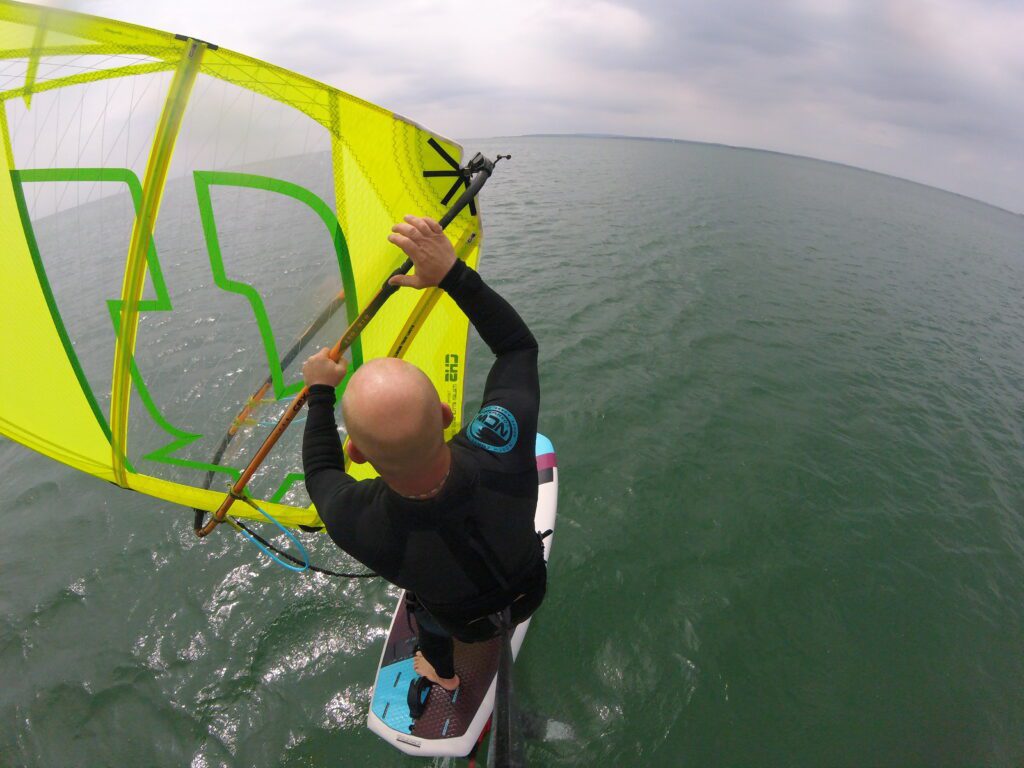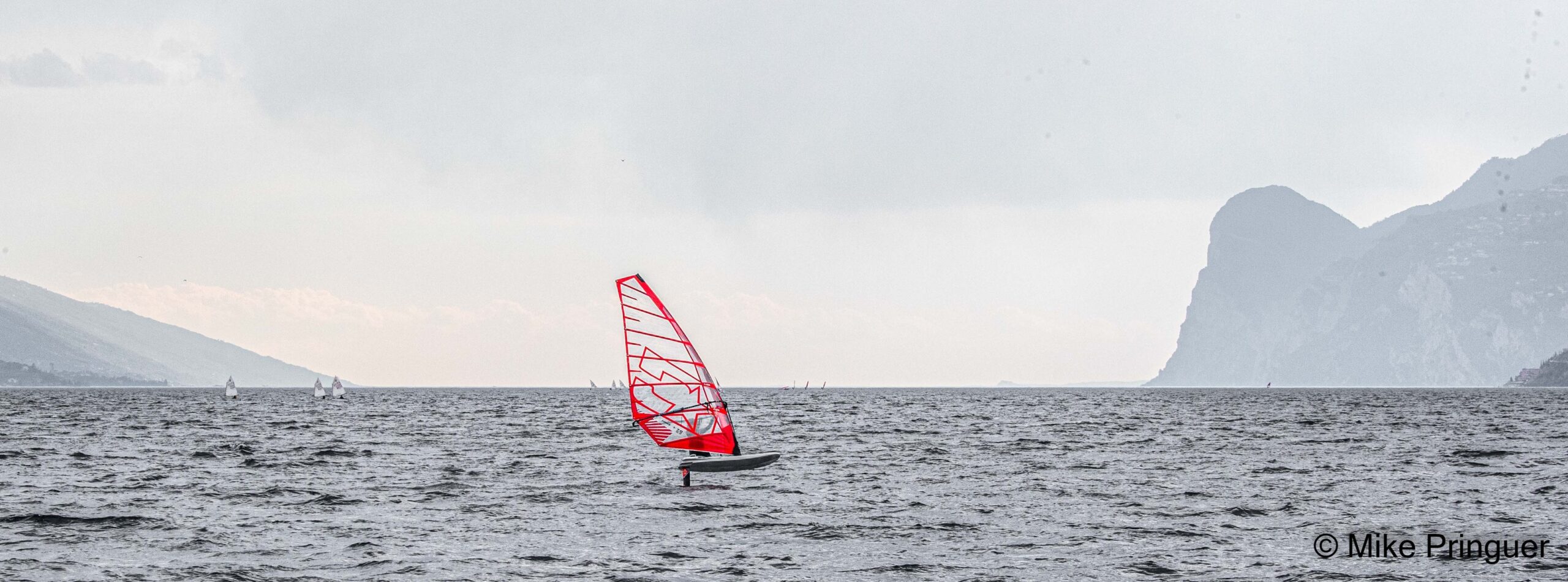Windfoiling is often perceived as being all about racing. If you’re not charging round a slalom course, going Mach 10, usually with big sails and boards then it’s not worth doing. Yet there’s more to windfoiling than this. If you’re a freerider (which most are) then it’s still a very applicable discipline. You don’t HAVE to go down the wing route.
Windfoil or wing foil?
Back when foiling started to really take hold (around five or six years ago) wing foiling wasn’t even a thing. Wind heads had either the kite foiling option or adding a foil to their windsurfing boards. Windfoiling was very much about using your existing quiver of sails to ride on foil in lighter airs. Basically, get out in conditions that would normally see you stuck on the beach.

But then winging emerged and windfoiling had started to head down the IQ Foil racing route. Suddenly, there was a shift in focus from much of the industry which changed how riders perceive the sport.
Windfoiling as it stands today.
Racing is a big focus within windfoiling circles. The promotion of using standard size sails (not much bigger than 7m) has all but been eclipsed. And board sizes appear to have gotten much wider too.
But it doesn’t have to be like this if you don’t want to race. And let’s face it, the majority don’t. What your average windsurfer who foils wants is to be cruising around on a sensible sized board, with the same size sail(s) they use for general freeride. Well, the good news is you still can very much do this and have plenty of fun!
Note: there’s a small element of freestyle sailing within windfoiling circles. This is where riders perform the same kind of freestyle tricks on foil as you see with finned boards. It’s definitely an option for those who can but, again, just like racing the masses aren’t going to take this up in large numbers. If you are inclined, however, the good news is as with freeride windfoiling your normal sails will do just fine.

Performance freeride.
A few brands do make freeride specific windfoil boards still. These are more on the compact side of the spectrum when compared to IQ foil boards for instance. 100L-160L ish is what you’ll find so there’s a size for all styles, abilities and conditions.
Coupling your normal 5.3m (as an example) to this style of board and foil gives even more range to your existing quiver. You’ll suddenly find you get more use of wave sails. And that’s a super cost effective plus point when considering the price of windsurfing gear. Another big tick in the box is windsurfers already have the base skills to transfer from fin to foil. Unlike wing foiling, where you have to learn everything from scratch! Once you’re competent (which is a fairly quick process) you’re then able to cruise and ride in a much wider array of winds. And for those who do like a doable trick the option for foiling duck gybes and sail 360s aren’t beyond the realms of possibility (this is what you can see happening in the accompanying video and pics).

Summing up the windfoiling experience.
We’re big fans of wing foiling here at Challenger Sails UK. But the fact is it isn’t the best option for everyone. Using the 5.3m Konda the rider in the above vid is making great use of flat water, 12-15 knots and sunny weather. There are no in depth technicalities needed to be learned (other than actually how to foil). And it’s just as much fun as windsurfing in standard fin mode (in our opinion).
For those looking to save even more cash convertible windsurf/windfoil boards are still an option (some brands make them). And as we said before this keeps the cost down.
Freeride windfoiling is just as much fun as it ever was. If you’ve brushed it to one side, or not considered the discipline, perhaps it’s time for a revisit…
For more articles like this head over to Challenger Sails UK’s blog here.







